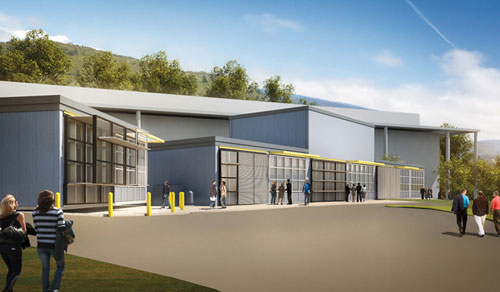The Living Lab
Many of the educational and green building research elements are placed on the exterior of the building, according to Howard Wertheimer, Georgia Tech's director of capitol management and space planning. "There are several types of renewable energy resources; different varieties of photovoltaics and building materials. We'll have the ability to plug and play (change out) some components for evaluation," Wertheimer adds. A 20,000-gallon rainwater storage system will highlight Georgia Tech's commitment to water conservation—the campus has approximately 3 million gallons in stormwater storage for non-potable uses such as irrigation and toilet flushing.
The design team is placing an interactive touch-screen dashboard in the lobby that will give visitors and users information about energy performance and water usage. The energy dashboard is becoming a common tool to inform visitors and give users feedback on the energy and water performance of buildings.
| A ROUNDUP OF U.S. & CANADIAN LIVING LABS | |
PROJECT |
PROGRAM |
Aprovecho |
A nonprofit educational center on a campus to |
Center for Building |
A rooftop lab addition that tests initiatives |
James | Swenson Civil |
A building whose structural systems, |
Oregon Sustainability |
Designed for net-zero energy use, this building |
Algonquin Centre |
Atrium exhibit wall and floor assemblies reveal |
| *Unbuilt | |
Flexibility is a defining concept at Lawrence Berkeley National Laboratory's (LBNL) Test Facility for Low Energy Integrated Building Systems. A new test bed series, due to be completed in 2013, will augment the lab's existing facility with an array of adaptable spaces. Typically, the structures consist of two identical side-by-side units at a variety of scales. Researchers can assess conditions while comparing, for example, an occupied space controlled by users to an unoccupied space controlled by building systems management software. The test beds are simple boxes used as armatures for the analysis of building systems, like HVAC, lighting, windows, or sun-screens.
 |
Lawrence Berkeley National Lab Test Facility for Low-Energy Integrated Building Systems Photo courtesy Stantec Architecture |









